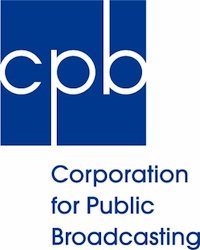 With this week’s NPR news has renewing the debate about de-funding public broadcasting, it’s worth highlighting a recent report (pdf) that puts our public broadcasting system into perspective when compared with 14 countries around the world.
With this week’s NPR news has renewing the debate about de-funding public broadcasting, it’s worth highlighting a recent report (pdf) that puts our public broadcasting system into perspective when compared with 14 countries around the world.
Though cutting public broadcasting appropriations to the Corporation for Public Broadcasting would essentially limit the “public” nature of our system by cutting out the government, it’s important to remember that most public radio stations receive only about 10 percent of their money from CPB. For many public radio stations, though, if it comes to it, the loss of this federal money may make it all the harder to sustain local programming — and local newsgathering — if it cannot be found elsewhere.
Taking a look at the report, compiled by Rodney Benson and Matthew Powers of NYU’s Department of Media, Culture and Communication, which includes a close breakdown of the public service models of Australia, Belgium, Canada, Denmark, Finland, France, Germany, Ireland, Japan, The Netherlands, New Zealand, Norway, Sweden, and the UK.
Some key findings:
• US per capita spending on public broadcasting is $4.
• Research fairly consistently shows that public television, simply put, makes for better quality news.
• As a corollary, public service television, at least in Denmark, Finland, the UK, and the US, makes people better informed and encourages higher levels of news consumption.
• The most trusted public broadcasters are those that are perceived as closest to the public, and most distant from the government and advertisers.
• While some countries play around with appropriations, many of these are for multi-year periods, creating some insulation from political pressure. And other countries, like the UK, Japan, and the Netherlands, rely primarily on license fees.
• Independent buffers between governments and the broadcasters help keep the government out of the content.
• Public broadcasters are all over the board when it comes to Internet transitions. Some are trying to figure out how to raise the money to make things more innovative, while others, like the BBC, are pioneers.
• Government newspaper subsidies are alive and well, and have been for a long time — many since the 1970s. They help keep afloat struggling newspapers and create a diversity of opinion. In some cases, they are even sponsoring innovation online. They exist in Belgium, Finland, France, the Netherlands, Norway, and Sweden.
• Public broadcasters, even in Europe, are facing pressure from commercial broadcasting — and hedge between trying to fulfill public service missions and compete by appealing to large audiences.
• It could be a lot worse.
In New Zealand, in 1989, the public broadcaster TVNZ lost all its funding and was actually required to produce dividends to pay back to the national treasury. Though some public funding has been restored, pretty much all New Zealand has is New Zealand on Air, a public media agency that gives out public funding to commercial and non-commercial channels. New Zealand has managed to keep Radio New Zealand publicly funded.
Some recommendations the report includes:
• Just because we aren’t Europe doesn’t mean we shouldn’t try to have strong public broadcasting.
• Make appropriations for multi-year arrangements, or better yet, establish a trust for public broadcasting.
• As the authors note: “The question is not if government should be involved, but how, and that is a question that demands an in-depth conversation, not a shouting match.”
The report makes a claim worth interrogating, though: the idea that few outlets providing public interest programming, commercial or non-commercial, reach a broad public audience. Just to take issue with that, the evening news figures — in total viewership — for February 21, 2011 look something like this:
NBC: 9,830,000
ABC: 8,400,000
CBS: 6,450,000
But NPR’s weekly reach on Morning Edition is 14 million and 13 million for All Things Considered. So it may be that more public interest news, and public service news, is reaching more people than we think. And the audience has continued to grow.
Benson and Powers are not alone in suggesting a public trust for news; they were joined by a chorus of reports last year looking for sustainability for news. But the question is: Could such a trust be established at a time of political discord when the very viability of the concept of publicly funded media is on the table?